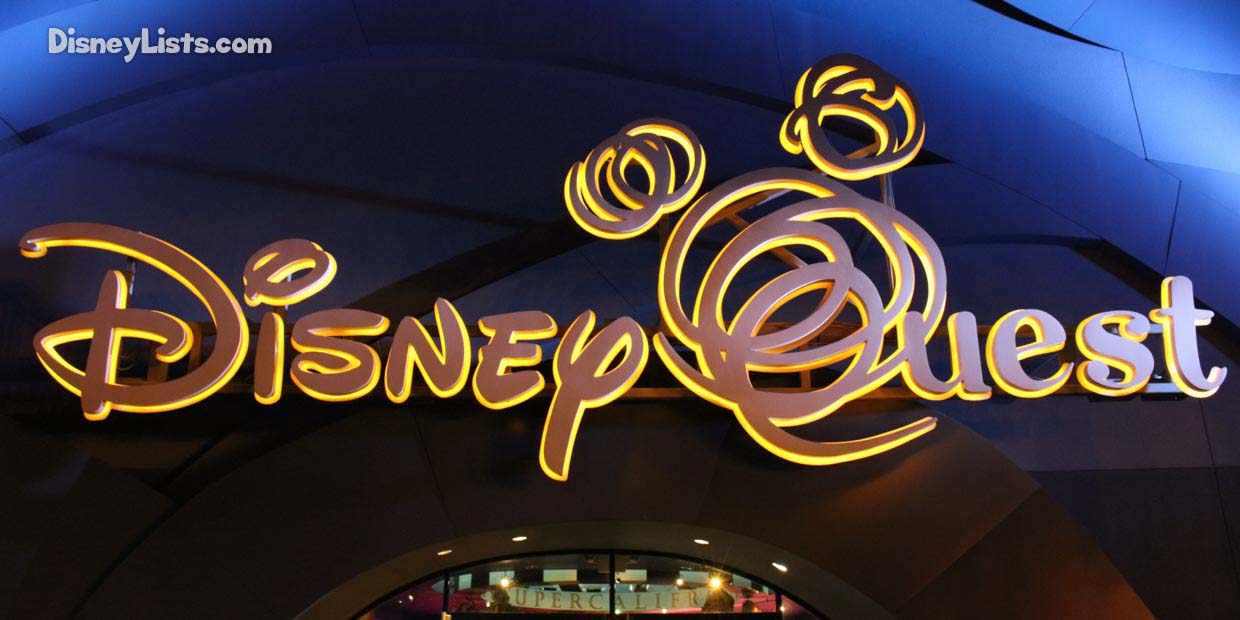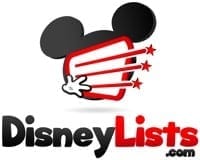Five Lesser-Known Disney Projects That Were Not Theme Parks

Whenever one is in public and hears someone talking about ‘Disney,’ one’s mind likely goes immediately to the films or parks and resorts. Nearly 100 years old, the Walt Disney Company has been a top player in the film industry, becoming a household name in the 1930s with the “birth” of Mickey Mouse and the success of Snow White and the Seven Dwarfs. With the opening of Disneyland in 1955 and Walt Disney World in 1971 (as well as numerous overseas destinations since), ‘Disney’ has also become synonymous with a vacation destination where all members of the family can enjoy entertainment together.
However, did you know that Disney has also dabbled in a number of projects over the past sixty years that have had nothing to do with the theme parks, but rather were standalone experiences around the United States?
5- DVC Resorts
We’ve all seen the billboard while driving through Disney World advertising Disney’s “Best Kept Secret:” the Disney Vacation Club, which is a timeshare program of sorts. Walt Disney World has a number of resort options for those who are DVC members, each of which offer exclusive benefits and options for larger accommodations with more amenities. However, Disney also has some DVC properties throughout the United States not attached to the theme parks that guests can stay at to get their little “Disney fix” without journeying to the busyness of Orlando or Anaheim. In fact, there are three DVC resorts: Disney’s Hilton Head Island Resort located on Hilton Head Island, South Carolina; Disney’s Vero Beach Resort located in Vero Beach, Florida; and Aulani, a Disney Resort and Spa, located in Kapolei, Hawaii. These resorts, which can be visited by DVC members, provide additional vacation destinations in a more relaxed beach setting while still offering the entertainment, dining and special treatment best offered by Disney. What is great is that these resorts also allow non-DVC members to stay; as someone who lives in central North Carolina, I have desired to stay at Disney’s Hilton Head Island Resort for years to scratch my Disney itch. Alas, we have been unable to justify the cost; for now, it remains a distant dream.
4- Mineral King Ski Resort
In 1965, the National Forest Service began soliciting proposals for a ski resort to be developed in Sequoia National Forest, located approximately 130 miles due north of Los Angeles. With the success of Disney’s attractions at the New York World’s Fair (see below), the company began to look outside Disneyland for new projects and began to consider a bid for the resort, which would be located in Mineral King. When the United States Forest Service reviewed the proposals, Disney’s was chosen with the most potential for bringing a projected ten million annual visitors to Sequoia National Park while creating an opportunity for families to enjoy time together in the outdoors. The resort would feature two hotels and ten restaurants and offer a variety of activities to skiers and non-skiers alike, including tobogganing, fishing, and horseback riding. In order to appease environmentalists, Walt suggested the plans include an underground parking garage with a cog locomotive that would take guests to the resort to prevent the destruction of protected forests. Walt also utilized his artists and Imagineers to design the resort and its entertainment offerings. It was proposed that the Mineral King Ski Resort include a show that featured “lots and lots of bears,” which would later become the Country Bear Jamboree. Marc Davis and Al Bertino developed sketches and story for the attraction, while X Atencio and George Bruns adapted popular folk and country songs to be sung by the show’s characters. Unfortunately, the Mineral King Ski Resort would not move past the conceptual phase: from 1965 until 1976, California’s Sierra Club opposed the Mineral King Ski Resort, citing the probable destruction of the National Forest due to the highway that would be built taking visitors into the park and to the resort area. The project stalled as the Sierra Club pulled out all the stops, including the passage of the National Environmental Policy Act signed by President Nixon in 1970 and even a US Supreme Court case, Sierra Club v. Morton in 1972. While these actions slowed the development and construction of the resort, it did not have legal standing to prevent Disney from constructing the ski resort. However, with the death of Walt Disney in 1966 and the development and opening of Walt Disney World in 1971, the Walt Disney Company had other things on its plate and the idea for the ski resort was ultimately abandoned.
3- DisneyQuest
With the popularization of video games in the 1980s and 1990s, Disney began to incorporate virtual entertainment into its offerings. As part of the expansion of Downtown Disney (now Disney Springs) in 1998, Disney opened DisneyQuest, a three-floor “interactive theme park” that offered a variety of video game arcades, a quick-service dining location, a gift shop, and a number of other VR experiences themed around popular theme park attractions. This new offering was immediately popular with young families and teens looking for something to do once the parks closed for the evening. In an effort to provide opportunities for guests to participate in Disney entertainment without traveling to the theme parks, Disney opened a DisneyQuest location in Chicago, with plans to open locations in other major North American cities. Unfortunately, the Chicago DisneyQuest did not experience the popularity of the Downtown Disney location and plans to open DisneyQuest in Philadelphia, Toronto, and Disneyland were soon abandoned; Chicago’s location would close only two years later in 2001. Over the next decade, the Downtown Disney DisneyQuest declined in popularity, stumbling along until it finally closed in 2017, making way for the reimagining that would become the NBA Experience at Disney Springs. One can only imagine how nationwide entertainment would have been different if Chicago’s DisneyQuest had been popular and other locations had opened throughout North America.
2- 1960 Squaw Valley Olympics
In 1955, Alexander Cushing, the owner of a struggling ski resort near Lake Tahoe, California, took a chance and applied to the International Olympic Committee to play host to the 1960 Winter Olympic Games. Cushing realized that being awarded the opportunity might bring great improvements and investments to his resort, which had the potential to be turned into a world-class facility and would draw visitors from all over the world. Willing to take a risk, the IOC accepted Cushing’s bid, securing the mountains of California as host for the next Winter Games. In preparing for the event’s Opening Ceremonies, Prentis Hale, president of the California games, asked Walt Disney to take on the role of Chairman of the Pageantry Committee. To assist him, Walt asked several of his employees at the studio to work alongside him, including Ron Miller, Card Walker, and John Hench, who would design much of the decor for the games and Olympic Village. Walt pulled out all the stops to ensure the pageantry and entertainment that accompanied the Games were up to Disney standards: a slew of bands and musical groups applied to perform at the Opening Ceremonies; actors and actresses interacted with guests; and a special presentation of Disneyland’s Golden Horseshoe Revue delighted the Olympians. While the events and memories of these games and Disney’s role in them have faded away over the decades, the story of the Squaw Valley Olympics once again proves the artistry and mastery with which Walt Disney and his company of artists, entertainers and innovators made entertainment delightful and accessible to people of all ages, interests and nationalities.
1 – The 1964-1965 New York World’s Fair
With the success of Disneyland, Walt Disney began to consider the creation of an “East Coast Disneyland.” However, as Marty Sklar once explained, Walt wasn’t sure that “the more sophisticated audiences of the East” would be interested in such pursuits. Rather, he began looking for an opportunity to conduct a test to see if there was any interest. Luckily, his friendships and contacts with a number of leading individuals including architect Welton Becket and New York bureaucrat Robert Moses opened the door to Disney’s participation in the New York World’s Fair, which lasted for two consecutive summers in 1964 and 1965. An opportunity to showcase the latest technological and cultural innovations and celebrate global cultures, the New York World’s Fair was a perfect opportunity to not only “test the waters” of the east, but also for the Walt Disney Company and WED Enterprises (an early iteration of Walt Disney Imagineering) to develop new technologies on someone else’s dime. Ultimately, Disney would partner with three entities to create attractions: the State of Illinois (“Great Moments with Mr. Lincoln”), Ford Motor Company (“The Magic Skyway”), and General Electric (“The Carousel of Progress”). A fourth attraction created solely by Disney (“it’s a small world”) would be funded by PepsiCo and would serve as a fundraiser for the United Nations Children’s Fund, also known as UNICEF. These four attractions would be some of the most popular at the fair and would be instrumental in the development and advancement of Disney’s audio-animatronics technologies. After the fair, all of the attractions would find a place in Disneyland (and later Walt Disney World) except for Ford’s Magic Skyway. However, several of the dinosaurs from the attraction would find a new home in the Primeval World Diorama along the Disneyland Railroad, while the ride system used on the attraction would later inspire the WEDWay Peoplemover and Tomorrowland Transit Authority. Walt’s risk in creating attractions for those East Coast sophisticates also paid off: it was the success of his attractions at the New York World’s Fair that would inspire him to begin planning what would later become Walt Disney World.
Honorable Mention: Progress City aka EPCOT
Late in Walt Disney’s life, he began to look to the future where he could apply everything he had learned from building a theme park with infrastructure at Disneyland and the massive operations necessary to pull off the New York World’s Fair. After reading Ebenezer Howard’s Garden Cities of Tomorrow, Walt was inspired to create his own planned community. He created a number of fake proxy companies to purchase 27,400 acres of land in central Florida (to prevent the prices of parcels from being raised due to recognition of the Disney name) on which he planned to build a city with public conveyances, underground highways, climate-controlled parks, and even a Disneyland-style theme park. However, the pride of his Experimental Prototype Community of Tomorrow was the displays of the latest industries, as well as an area where the diverse nations and cultures of the world could live side-by-side and offer restaurants and markets to visiting guests. EPCOT would not merely be a vacation destination, but “a special kind of new community…dedicated to the happiness of the people who live, work, and play here.” Unfortunately, Walt died two short months after introducing his dream, and EPCOT would sit on the Disney drawing board until 1982 when Walt Disney World’s second theme park opened to the public.
Note: For more on the history of Walt Disney’s role in the New York World’s Fair, check out Andrew Kiste’s books, Walt Disney and the 1964-1965 New York World’s Fair: Great Moments and Walt Disney and the 1964-1965 New York World’s Fair: TravelMagic, now available on Amazon. You can also see a number of archival documents and photographs from the fair at www.KisteTheHistorian.com.
For a no obligation, FREE Quote on a Disney vacation package, please contact our travel partner Magical Vacation Planner at 407-442-0227 (407-442-0215 for Spanish). You can also request a FREE quote online by Clicking HERE.

